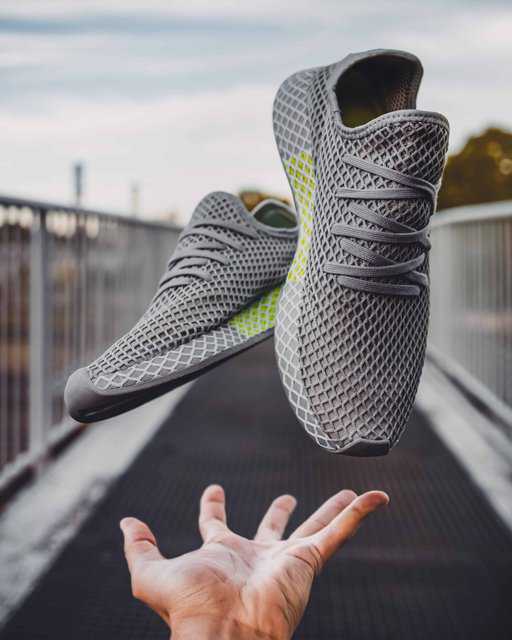Running is a popular form of outdoor recreation that requires proper footwear to ensure a comfortable and safe experience. With so many different types of running shoes on the market, it can be overwhelming to choose the right pair for your needs. In this blog post, we will take a deep dive into the different types of running shoes available for preparing for outdoor recreation.
Trail Running Shoes
Trail running shoes are specifically designed for running on off-road terrain, including rocky, muddy, and uneven surfaces. These shoes are typically more durable than road running shoes and have a more aggressive outsole for better traction on loose and uneven surfaces. They also have a reinforced toe cap and a protective plate to protect your feet from rocks and other debris on the trail.
Trail running shoes also often feature a more supportive and secure fit, with a snugger upper and lacing system to keep your foot in place on uneven terrain. Some trail running shoes may also have additional features such as waterproofing, breathability, and rock guards to further protect your feet from the elements and rough terrain. It’s important to consider the type of trail you’ll be running on when choosing trail running shoes, as some shoes may be better suited to technical, rocky terrain while others may be better for softer, muddy trails.
Road Running Shoes
Road running shoes are designed for running on hard, flat surfaces such as pavement and concrete. These shoes typically have a lighter weight and less aggressive outsole than trail running shoes, making them better suited for running on smooth surfaces. They also have more cushioning in the midsole to absorb the impact of running on hard surfaces.
Road running shoes often feature a more flexible and responsive midsole, which can provide a smoother ride on hard surfaces. They may also have a more breathable upper to keep your feet cool and dry during long runs. Some road running shoes may also have additional features such as a stability or motion control system to help correct your gait and reduce the risk of injury. It’s important to consider your individual needs when choosing road running shoes, as the amount of cushioning and support you need will depend on your running style and foot type.
Cross-Training Shoes
Cross-training shoes are versatile shoes that are designed for a variety of activities, including running, weightlifting, and aerobics. These shoes have a wider base for better stability during lateral movements and are typically more durable than running shoes. They also have a lower profile and less cushioning than running shoes, which can make them less comfortable for long-distance running.
Cross-training shoes often feature a more supportive upper and midsole, which can provide additional stability during lateral movements and multi-directional activities. They may also have a more durable outsole to withstand the wear and tear of different activities. Some cross-training shoes may have additional features such as a reinforced toe box to protect your feet during weightlifting or a breathable upper for comfort during cardio workouts. It’s important to consider the specific activities you’ll be doing when choosing cross-training shoes, as the amount of support and cushioning you need will depend on the types of movements you’ll be doing.
Minimalist Running Shoes
Minimalist running shoes are designed to simulate barefoot running by providing minimal support and cushioning. These shoes typically have a thin sole and a flexible upper that allows for natural foot movement. They are often used by runners who want to improve their running form and strengthen their foot muscles. However, they are not recommended for beginners or runners with foot or ankle problems.
Minimalist running shoes are designed to promote a natural and efficient running style by encouraging a midfoot or forefoot strike, rather than a heel strike. They can also help improve proprioception, or the ability to sense and respond to changes in terrain. Minimalist running shoes may also have a wider toe box, which can allow your toes to splay naturally and provide a more stable base for running. However, because minimalist running shoes provide minimal support and cushioning, they may not be suitable for runners with a history of foot or ankle problems, or those who are new to running. It’s important to gradually transition to minimalist running shoes to allow your feet and muscles to adapt to the new style of running.
Racing Shoes
Racing shoes are designed for competitive runners who are looking for an edge in speed and performance. These shoes are typically lighter and more flexible than other types of running shoes, with a minimal amount of cushioning in the midsole. They also have a more streamlined design to reduce drag and improve speed.
Racing shoes are designed to be worn for short distances, such as sprints or middle-distance races, rather than for long-distance running. They are typically made from lightweight and breathable materials, such as mesh, to reduce weight and improve airflow. Racing shoes may also feature spikes or cleats on the outsole for better traction on the track or other surfaces. However, because they have minimal cushioning and support, they may not be suitable for runners with foot or ankle problems or those who require more stability during running. It’s important to choose a racing shoe that is appropriate for the type of race you will be running, as well as your individual foot shape and running style.
In conclusion, choosing the right type of running shoe is essential for a comfortable and safe running experience. Whether you’re running on trails, roads, or a variety of surfaces, there is a type of running shoe that is suited to your needs. Consider your running goals and the terrain you’ll be running on to help you choose the right type of running shoe for preparing for outdoor recreation.

